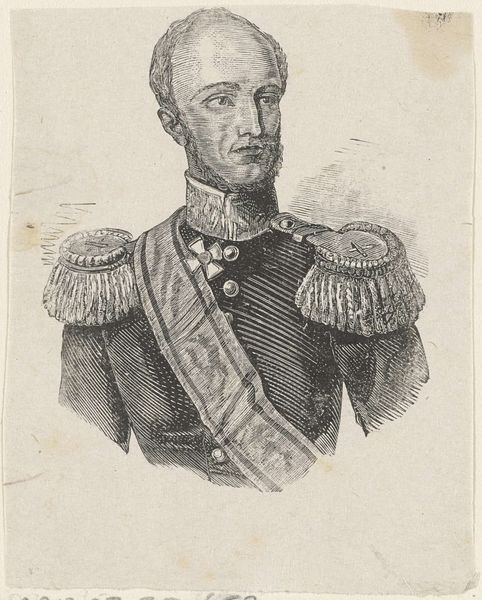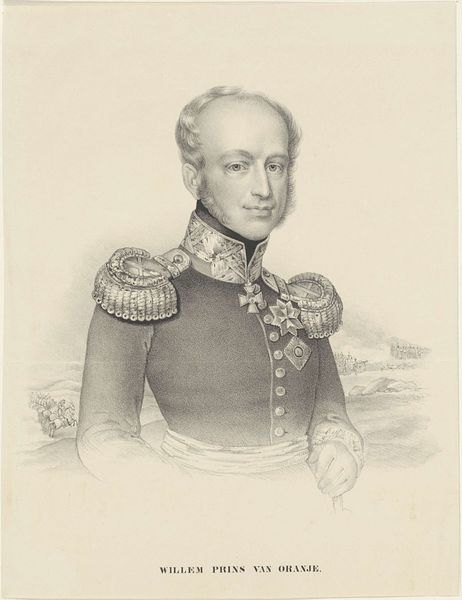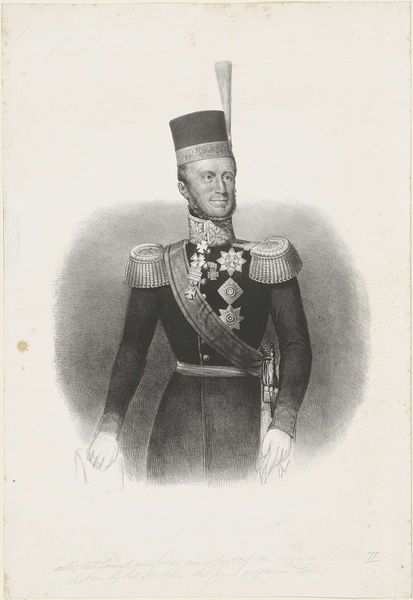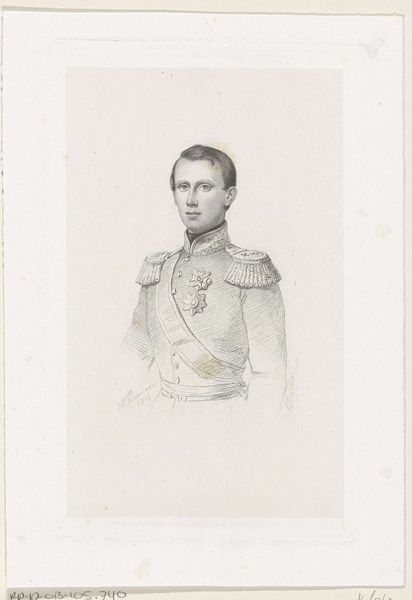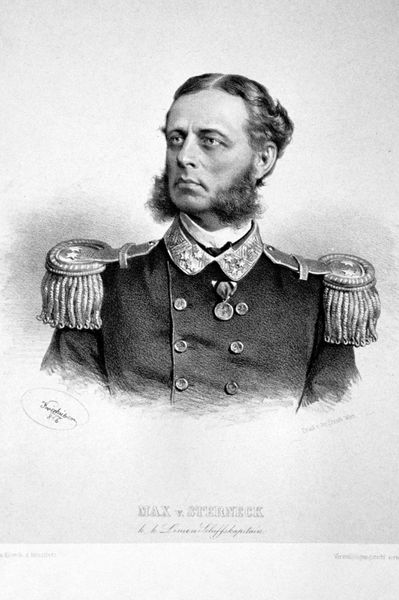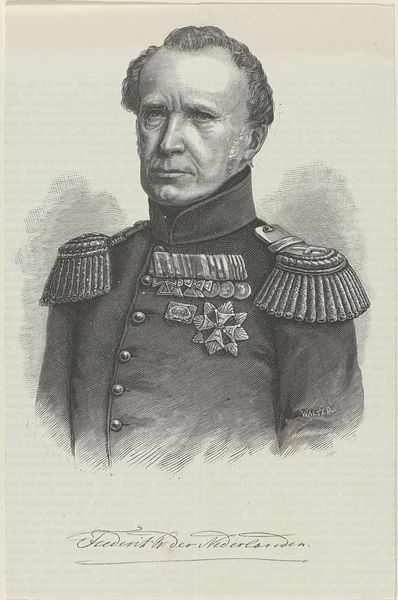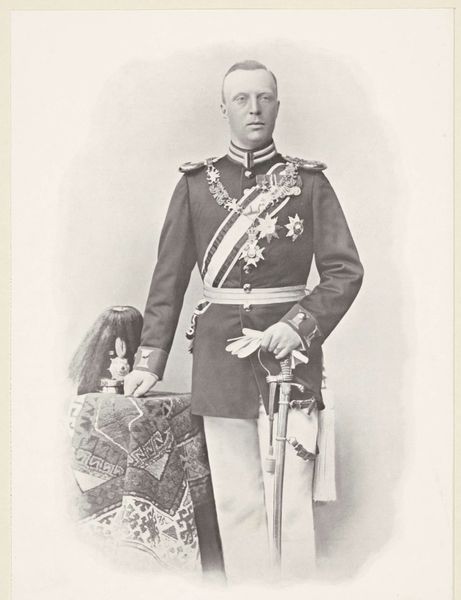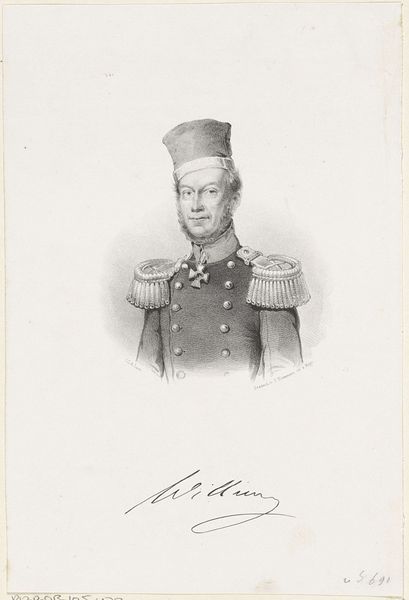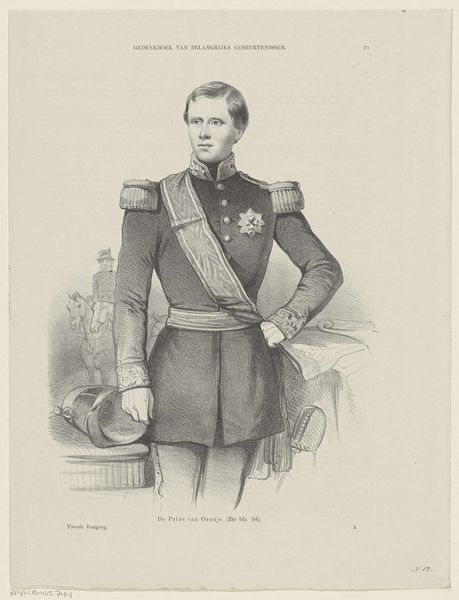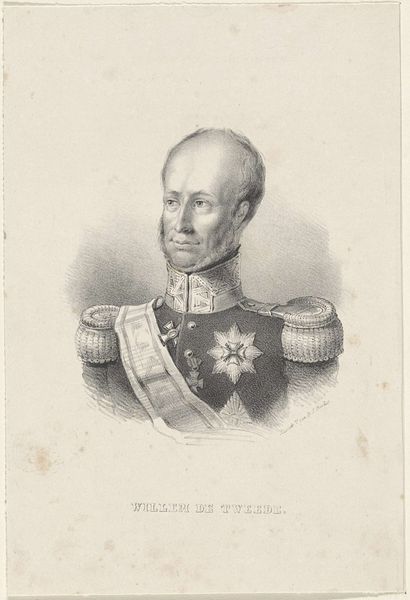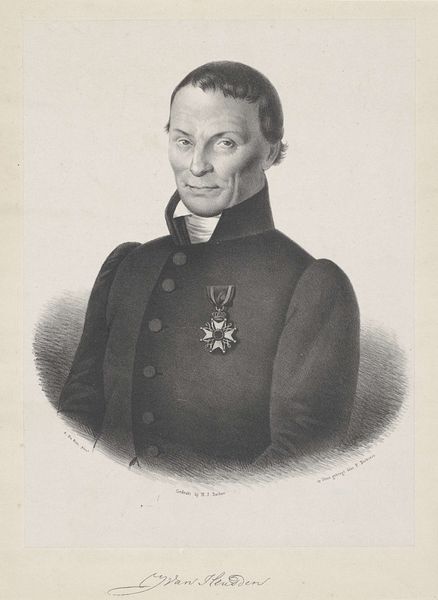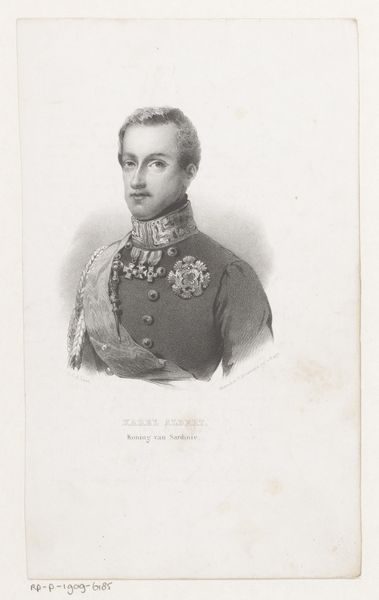
drawing, print, graphite
#
portrait
#
drawing
#
neoclacissism
# print
#
charcoal drawing
#
graphite
Copyright: Public domain
Curator: This is Josef Kriehuber’s 1854 portrait of Baron Heinrich von Hess, an Austrian General, rendered as a print, drawing on graphite and charcoal. Editor: Imposing. It radiates an aura of strict, almost cold authority. The sharp lines and monochrome palette definitely amplify that. It makes me wonder about power dynamics and national identity. Curator: Indeed. The symbols of authority are meticulously rendered here, especially in the ornate details of his uniform and the many stars and crosses he sports. These are the visual languages of status and power of the time. They solidify the Baron’s image as an instrument of Imperial might. Editor: But it's more than just individual authority, right? It feels representative of broader power structures, particularly the militaristic elites during a period of intense political maneuvering and, soon after this was created, outright conflict. Hess wasn’t merely a general; he was a figure embodying Austrian ambitions and control. Curator: Precisely! Neoclassicism often looked to antiquity, framing contemporary leaders in that same heroic light. It creates a sense of timeless authority and legitimacy. Look how carefully his medals are rendered: emblems carry potent psychological weight and national memory. Each star alludes to decades of campaigns. Editor: Absolutely. His stern expression speaks volumes too, but beyond his expression, his body almost appears trapped. It feels performative. I am thinking, does it mirror broader social expectations of masculinity? Curator: That is really insightful. How the portrayal, both as a personality and also an allegory, shapes expectations for others in similar position! Editor: It does leave me considering the long shadow cast by figures like Hess and their role in consolidating imperial narratives and the consequences of projecting that particular type of authoritative, martial figure as central to the identity of nationhood. Curator: Thinking about all these aspects opens fresh viewpoints for analyzing and appreciating Kriehuber’s depiction. It encapsulates individual traits but it also operates on the symbolic and ideological registers, speaking volumes about an era.
Comments
No comments
Be the first to comment and join the conversation on the ultimate creative platform.
